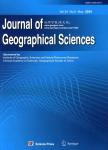Community-based scenario modelling and disaster risk assessment of urban rainstorm waterlogging
Community-based scenario modelling and disaster risk assessment of urban rainstorm waterlogging作者机构:Geography Dept. of Shanghai Normal University Shanghai 200234 China Geography Dept. of East China Normal University Shanghai 200062 China
出 版 物:《Journal of Geographical Sciences》 (地理学报(英文版))
年 卷 期:2011年第21卷第2期
页 面:274-284页
核心收录:
学科分类:083002[工学-环境工程] 0830[工学-环境科学与工程(可授工学、理学、农学学位)] 0709[理学-地质学] 07[理学] 08[工学] 0706[理学-大气科学] 0704[理学-天文学]
基 金:National Nature Science Foundation of China, No.41071324 No.40730526 Key Subject Developing Project by Shanghai Municipal Education Commission, No.J50402 Science and Technology Commission of Shanghai Municipality, No.08240514000 Leading Academic Discipline Project of Shanghai Normal University, No.DZL809
主 题:scenario modelling small-scale rainstorm waterlogging disaster risk assessment Shanghai
摘 要:Scenario modelling and the risk assessment of natural disasters is one of the hotspots in disaster research. However, up until now, urban natural disaster risk assessments lack common procedures and programmes. This paper selects rainstorm waterlogging as a disaster to research, which is one of the most frequently occurring hazards for most cities in China. As an example, we used a small-scale integrated methodology to assess risks relating to rainstorm waterlogging hazards in the Jing'an District of Shanghai. Based on the basic concept of disaster risk, this paper applies scenario modelling to express the risk of small-scale urban rainstorm waterlogging disasters in different return periods. Through this analysis of vulnerability and exposure, we simulate different disaster scenarios and propose a comprehensive analysis method and procedure for small-scale urban storm waterlogging disaster risk assessments. A grid-based Geographical Information System (GIS) approach, including an urban terrain model, an urban rainfall model and an urban drainage model, was applied to simulate inundation area and depth. Stage-damage curves for residential buildings and contents were then generated by the loss data of waterlogging from field surveys, which were further applied to analyse vulnerability, exposure and loss assessment. Finally, the exceedance probability curve for disaster damage was constructed using the damage of each simulated event and the respective exceedance probabilities. A framework was also developed for coupling the waterlogging risk with the risk planning and management through the exceedance probability curve and annual average waterlogging loss. This is a new exploration for small-scale urban natural disaster scenario simulation and risk assessment.



